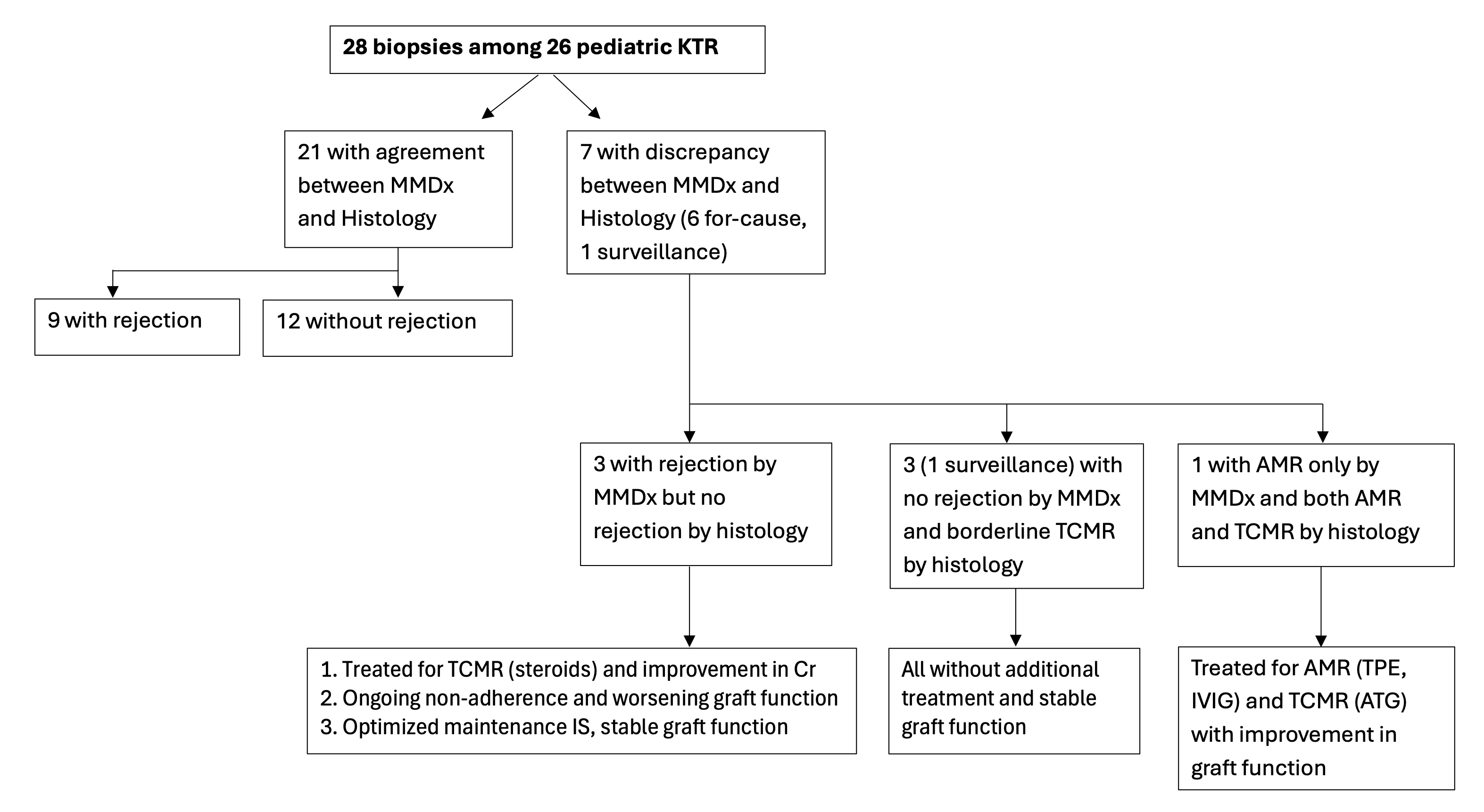Rady Children's Pediatric Nephrology
Use of tissue-based gene expression alongside histology improves clinical decision-making in pediatric kidney transplant recipients
Clarkson Crane1, Courtney Benavides1, Elizabeth Ingulli1.
1UC San Diego & Rady Children's Hospital, San Diego, CA, United States
Background: Banff classification criteria are the gold standard for histologic evaluation of kidney biopsy tissue. However, tissue-based gene expressing profiling correlates with histologic findings, offers mechanistic insight into allograft rejection, and has the potential to provide clinically relevant information in cases where histology is ambiguous or tissue suboptimal in adult kidney transplant recipients (KTR). However, this has not been comprehensively studied in pediatric KTR. We aimed to assess the agreement between molecular and histology biopsy results and quantify the degree to which this changes management for acute rejection in our cohort of pediatric KTR, hypothesizing molecular diagnostics provide added benefit in cases of ambiguity.
Methods: Pediatric KTR undergoing a surveillance or indication biopsy between 10/2023 and 1/2025 were included for analysis. Histology was interpreted using 2019 Banff criteria. The Molecular Microscope Diagnostic System (MMDx) was utilized for tissue-based gene expression. Quantitative results of both supervised and unsupervised MMDx analyses were analyzed for association with histologic Banff criteria and the agreement of final diagnoses was assessed.
Results: Twenty-eight biopsies from 26 pediatric KTR were included for analysis (8 surveillance and 20 for-cause). KTR were a median of 11 years (IQR 3-13) at time of transplant and biopsies were done a median of 25 months (IQR 12-67) after transplant. There was a moderate correlation between Banff t+i and the MMDx TCMR classifier, r = 0.58, p = 0.002. A strong correlation was observed between microvascular inflammation (Banff g+ptc) and MMDx ABMR score, r = 0.73, p <0.001. There was overall agreement of the final diagnosis in 75% of biopsies. Those with discrepancy were more likely to be for-cause biopsies (6 of 7 without agreement). In the 7 cases with discrepant diagnoses, MMDx results changed clinical management in three cases, two of which were noted to have suboptimal tissue to confirm a histologic diagnosis of acute rejection (Figure 1).

Conclusions: Use of biopsy-based gene expression gene profiling has a strong correlation with histologic diagnoses in pediatric KTR. When there is discrepancy, treating based on molecular diagnosis generally resulted with clinical improvement, suggesting added benefit to obtaining tissue-based molecular analyses. This is particularly notable and relevant in cases where histologic diagnosis was limited by ambiguous or suboptimal tissue.
